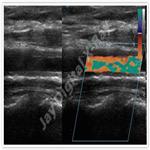
|
| Title | : | First Aurtho Case |
| Description | : | X-radiation (composed of X-rays) is a form of electromagnetic radiation. X-rays have a wavelength in the range of 0.01 to 10 nanometers, corresponding to frequencies in the range 30 petahertz to 30 exahertz (3×10 Hz to 3×10 Hz) and energies in the range 100 eV to 100 keV. They are shorter in wavelength than UV rays and longer than gamma rays. In many languages, X-radiation is called Röntgen radiation, after Wilhelm Röntgen, who is usually credited as its discoverer, and who had named it X-radiation to signify an unknown type of radiation. Correct spelling of X-ray(s) in the English language includes the variants x-ray(s) and X ray(s) |
|
|
|

|
X-ray image of a child who visited ImageCare after swallowing a penny:

This patient came in after a fall down the stairs. The patient had an x-ray of their tibia-fibula and a fracture was discovered.

|
|
|
|
|
|